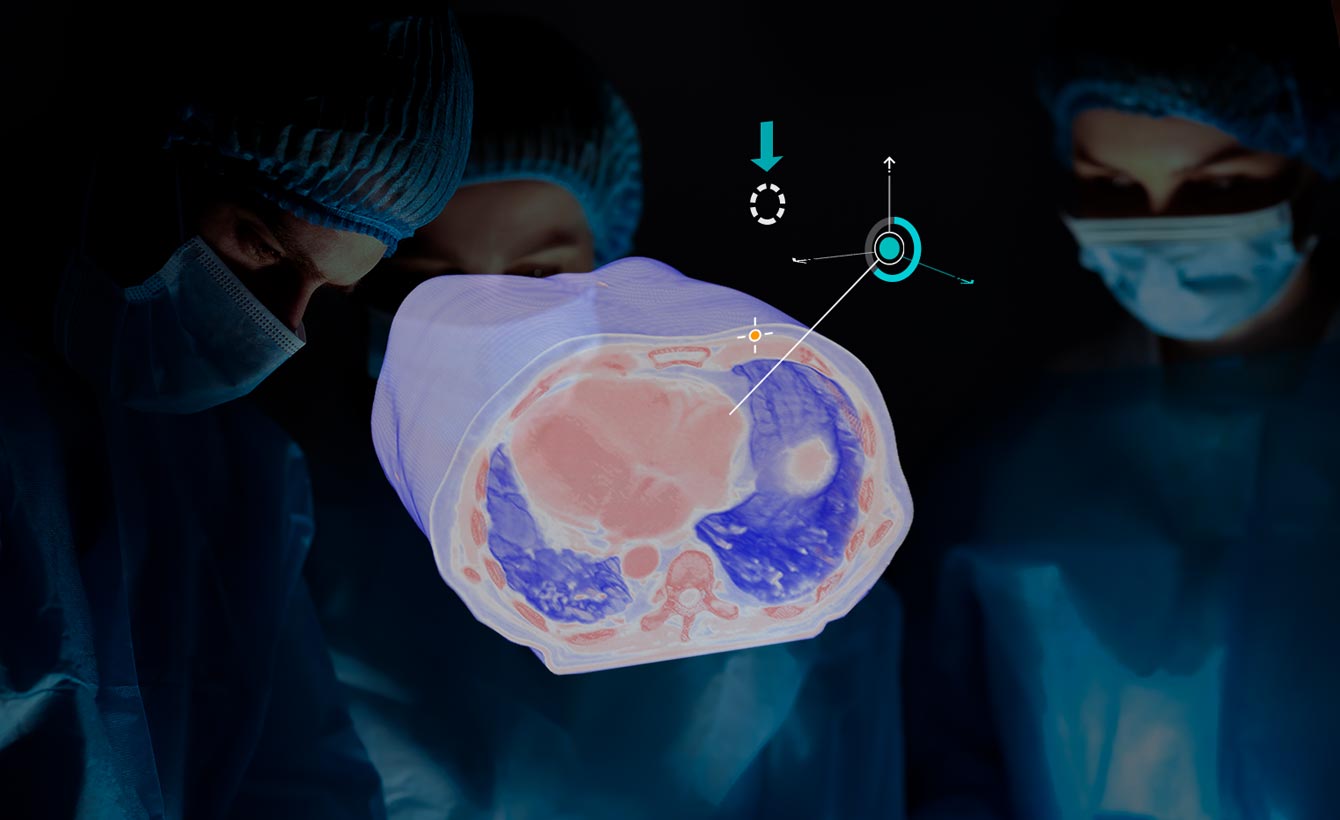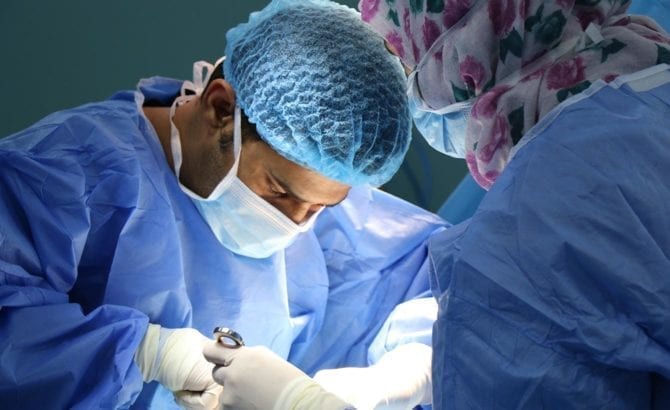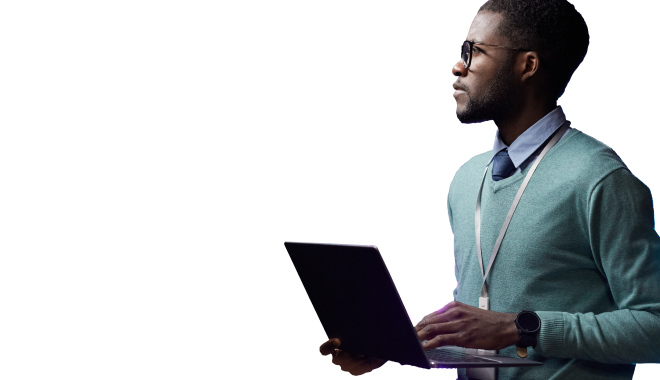Osakidetza: Guided biopsies with augmented reality
Biopsy is a process to extract samples of human tissue in order to diagnose a disease.
It can sometimes be very invasive, causing discomfort to patients. Therefore, it has to be performed precisely to cause as little harm as possible.
What if augmented reality could be used by healthcare professionals for a more rigorous work, avoiding annoying incisions where it is not necessary?
We have developed an application on HoloLens that allows us to graphically visualize a patient’s scanner, on which the doctor can decide where to take the sample in a biopsy process.
Osakidetza is the Basque Country’s public health services organization. It has more than 35 centers and is one of the models to follow thanks to its investment in research and innovation.
A widespread problem in medicine is that there are no tools available that allow a real 3D view of the patient’s medical images. Nor are there systems that can guide medical procedures.
Therefore, they needed a system that would allow them to work on the image coming from the scanner, as well as allowing the physician to decide on the appropriate path to perform the biopsy process.



The process
The 3D medical test is projected by holograms on the patient’s body, allowing you to understand in a clearer and more intuitive way what the body looks like and how to proceed in order to take the sample properly.
The glasses will show the surgeon images of the inside of the body projected onto the real patient. With simple hand gestures or voice instructions, the surgeon will be able to manage these projections to choose the ideal point where to perform the procedure, with what inclination and at what depth.
In addition, it allows the physician to be hands-free throughout the process and interact with the application by voice commands.
Results
- It allows the physician to understand in a clearer and more intuitive way what the body looks like and how to proceed in order to take the sample in the right way.
- Allows cost savings in medicine, as well as faster and more accurate diagnoses.
- Complies with the DICOM standards specified by NEMA.
- It is compatible with PACS medical imaging servers.
- Transforms a CT medical test into a functional hologram.
- Allows voice commands for each of the actions: move, rotate, scale, cut planes, mark targets or manage markers.
- Uses machine vision with the ability to identify markers on the patient in the real world and position them on the patient’s body.
We are ready for new challenges


